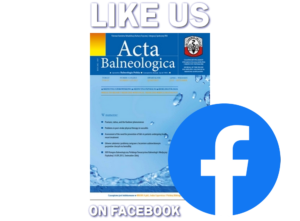Position of the Polish Society of Cryotherapy Regarding the Tragic Accident in a Cryosauna in Paris
Safety First
The Polish Cryotherapy Society, committed to the quality of cryomedical devices and the safety of their users, cannot remain indifferent to the tragic accident that occurred in one of the Paris gyms. As a result of the incident, two individuals using a cryosauna lost their lives.
We feel obliged to remind the public that a cryosauna is not the same as a certified whole-body cryochamber used in medicine.
These terms are often confused, which can lead to dangerous simplifications and incorrect assumptions.
A whole-body cryochamber is a device intended for conducting whole-body cryotherapy and low-temperature stimulation. It should allow for temperature regulation in the range of -150°C to -100°C, enable the user to breathe atmospheric air, and provide continuous visual monitoring by trained personnel. Mandatory features include oxygen level sensors, alarm systems, emergency exits, and audio-visual communication systems. The fundamental condition for using a cryochamber is ensuring patient safety. Users must be informed about contraindications and indications for treatment and adequately prepared for the procedure. Written confirmation is required to acknowledge that the user has read the device instructions, knows the location of emergency exits and safety buttons, and understands the behavior required in the event of light or sound alarms. Patients must remain in constant visual and verbal contact with medical personnel via monitoring and audiovisual systems. A timer should also be present inside the cryochamber, allowing users to independently monitor the duration of the procedure.
It is unacceptable to leave patients without continuous supervision. In multi-person cryochambers, it is recommended that at least two people be present at the same time.
According to media reports, the tragic accident in Paris was related to, among other things, a failure in the nitrogen system, which led to fatal poisoning from liquid nitrogen vapors or oxygen deficiency in the room. This incident tragically highlights the dangers of using devices lacking appropriate certification, safety features, and proper technical and medical oversight.
In modern cryochambers, liquid nitrogen is used only in a closed technical loop, without any contact with the patient. The person undergoing treatment breathes safe, continuously monitored atmospheric air, and any threats trigger immediate device shutdown.
In contrast, cryosaunas expose the user’s body (excluding the head) to direct contact with liquid nitrogen vapors, posing a real health risk. These devices are not classified as medical devices and are therefore not subject to rigorous standards or certification. Lack of proper insulation and an open nitrogen system can result in poisoning or suffocation. That is why constant supervision by trained personnel is essential—it allows for an immediate response in case of symptoms such as shortness of breath, extreme fatigue, nausea, vomiting, collapse, or disorientation. A key element in ensuring the safety of cryotherapy is the mandatory certification of cryogenic devices. Certification guarantees compliance with the technical and medical standards necessary for safe treatment procedures.
As a scientific society, we emphasize that the effectiveness of whole-body cryotherapy procedures has been confirmed by numerous studies over the years – but only in relation to certified medical devices, namely whole-body cryochambers. The Polish Society of Cryotherapy also participated in developing the Position of the Committee for Rehabilitation, Physical Culture, and Social Integration of the Polish Academy of Sciences regarding devices and the safety of cryotherapy procedures. It has co-authored publications outlining the principles for the safe conduct of such treatments.
Prof. dr Agata Stanek
President of the Polish Society of Cryotherapy (PTKRIO)
Prof. dr Anna Skrzek
Vice-President of the Polish Society of Cryotherapy (PTKRIO)

